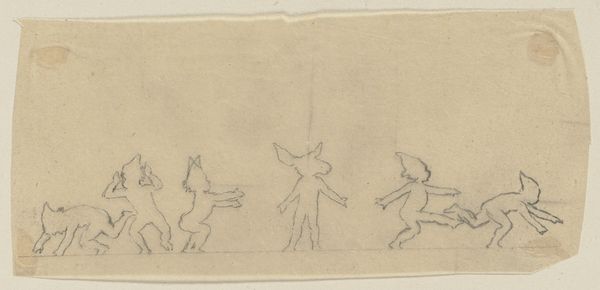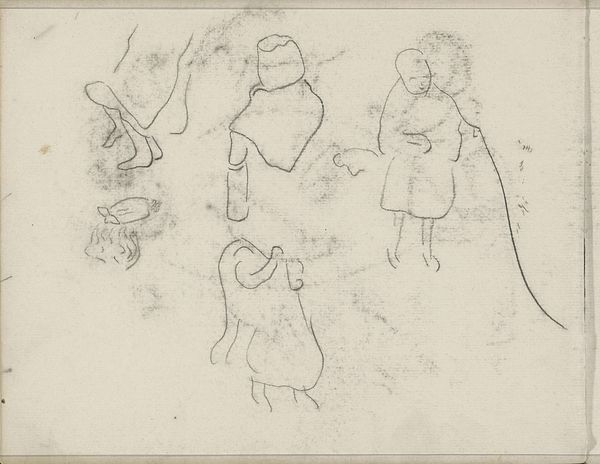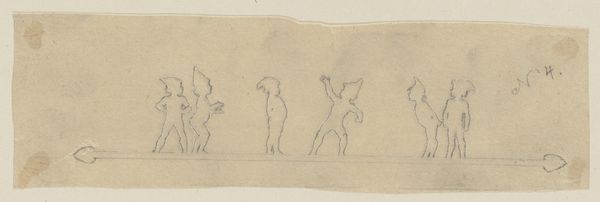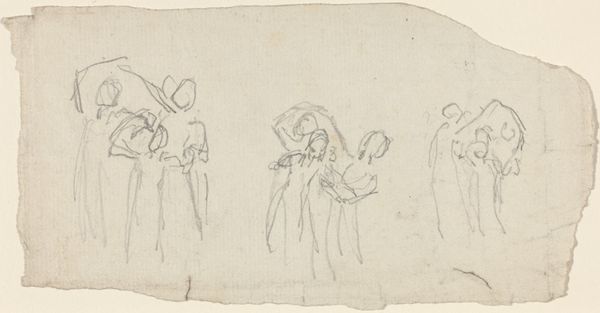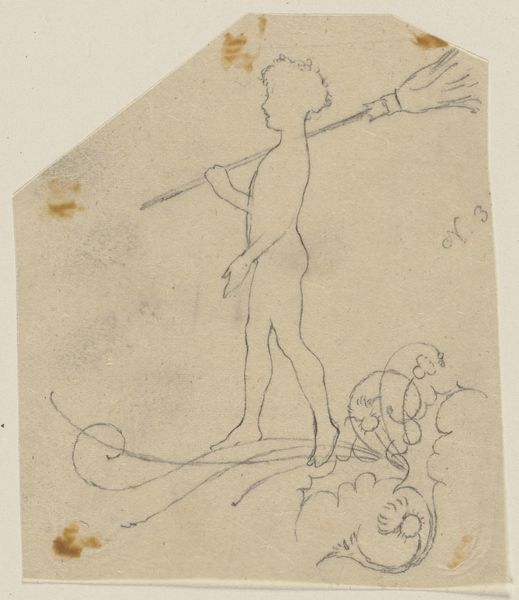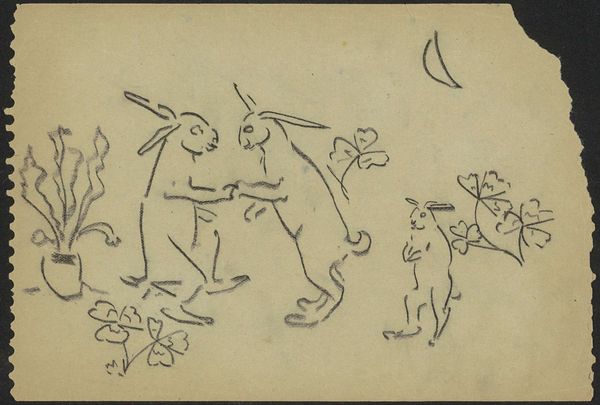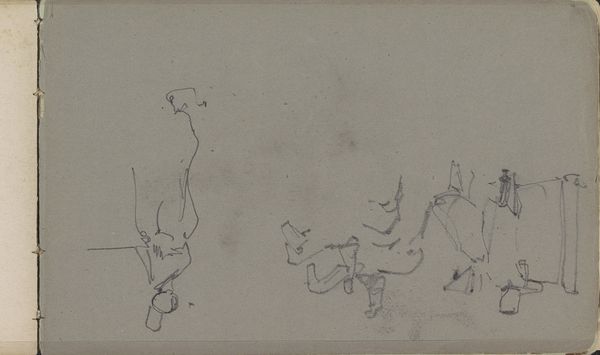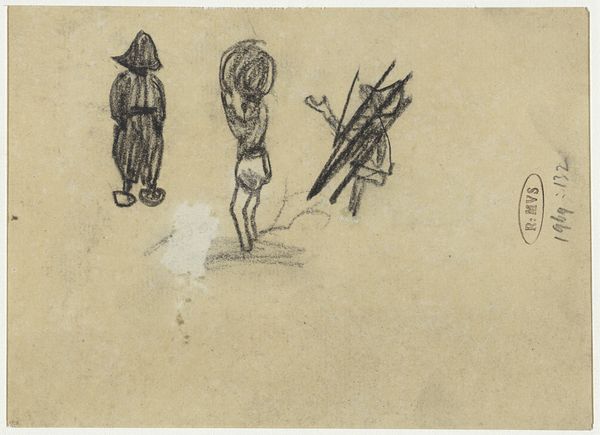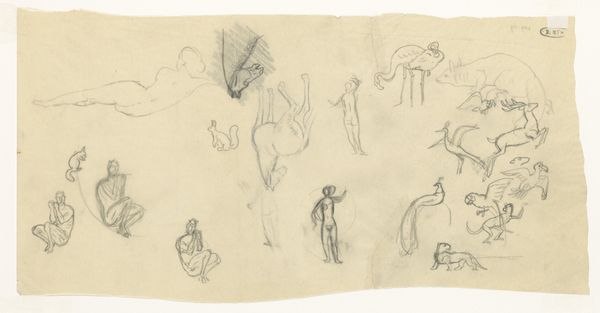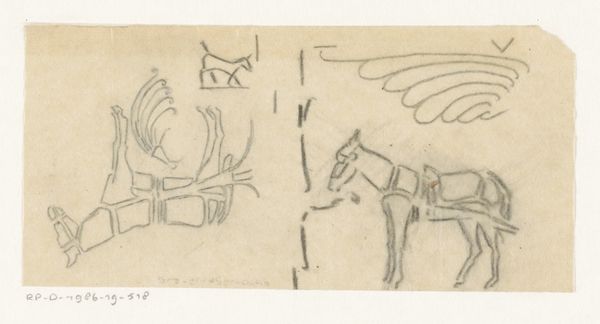
drawing, pencil
#
drawing
#
landscape
#
figuration
#
pencil
Copyright: Public Domain
Curator: Right now, we're looking at "Four Elves," a drawing from around 1867 to 1868 by Paul Konewka. It's a pencil sketch currently residing here at the Städel Museum. What's your initial read on this playful scene? Editor: Playful is right. They seem caught between flight and frolic, a glimpse into a hidden world—though a slightly smudged one, given the age of the paper. It makes me wonder if it's more of a forgotten daydream than a concrete vision. Curator: Interesting point. Konewka, you see, was quite celebrated in his day for his silhouette illustrations. He mostly worked in cut paper, creating very distinct outlines. This drawing feels very different, like we're seeing his process, his initial spark of an idea. Editor: It does feel quite raw. It really contrasts with the finality that a finished silhouette illustration suggests. Looking at it now, I almost see these little elves as representing children acting out imagined heroic adventures, maybe even making fun of that whole idea in the process. Curator: I think that connection to play is so important to understanding the Victorians’ engagement with the fantastical. These drawings gave families something to talk about and created an alternative to rigid moralizing children’s tales. These mischievous elves perhaps signal a kind of resistance. Editor: Resistance is a strong word, but the looseness of the sketch style invites a degree of emotional freedom. It is as though it encourages the viewer to wander with the imagination, to make sense of our social structure using symbolism and folklore. Curator: Indeed. I mean, seeing this within the context of Konewka's career illuminates a really interesting contrast between the precision expected of him as a commercial artist and the fluidity of his private experimentation, perhaps reflecting a social atmosphere where artistic freedom started challenging existing structures. Editor: That's so important to realize. Art always has a connection to the surrounding societal environment. When the context of a piece like this one is analyzed from multiple angles it becomes very apparent. Curator: Well said! The next time you come across a small work on paper, perhaps take a moment to imagine what kinds of possibilities, social conditions, and freedoms—artistic or otherwise—it represents!
Comments
No comments
Be the first to comment and join the conversation on the ultimate creative platform.

